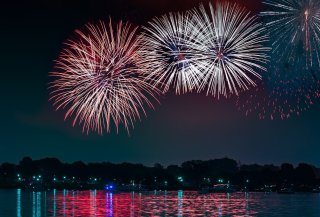Assessing Perchlorate Occurrence in Ambient Waters Following the Usage of Fireworks Grant

Perchlorate is a chemical used in rocket propellants, explosives, flares and fireworks. Prior research has investigated water contamination from fireworks; however, there are gaps in understanding the magnitude and extent of perchlorate contamination before, during, and after fireworks are discharged around drinking water sources.
EPA awarded $2,499,583 in research grant funding to Texas Tech University for research on perchlorate contamination after fireworks events near water sources. Research results from this RFA are expected to provide a better scientific understanding of the magnitude and timing of perchlorate after fireworks events and enable states and utilities to determine whether actions may be needed to reduce exposure via drinking water.
Texas Tech University, Lubbock, Texas
Project Title: Quantification and Modeling of Perchlorate Impacts from Fireworks on Drinking Water Sources
Principal Investigator: Andrew Jackson
Award Amount: $2,499,579
This project aims to evaluate the relative impacts of perchlorate from fireworks on surface drinking water sources and groundwater drinking sources across the US by measuring perchlorate at six sites (two rivers, three lakes, and a groundwater site) during July 4th events, as well as periodic firework displays at baseball stadiums on the two rivers selected. Seven specific objectives will be addressed through a combination of field and laboratory studies combined with modeling efforts to fill critical knowledge gaps. Drinking water sources in the watersheds will be evaluated before and after major periods of fireworks and during subsequent rain events. In addition to measuring the perchlorate inputs due to runoff or infiltration, the research will also measure the direct deposition into water bodies. Aerial deposition will be measured by limited direct air and deposition sampling at some sites. To expand the reach of the study, additional samples will be requested from the Clean Air Status and Trends Network (CASTNET) and National Atmospheric Deposition Program (NADP) (two existing sampling networks), and the project will also include nation-wide surveys of public water supply intakes before and after periods of fireworks. All chemical, physical, and biological observations from the six sites will be integrated into the Soil and Water Assessment Tool (SWAT), expanding upon the tool’s ability to assess the impact of firework-driven perchlorate emissions.
View the research abstract for this project.
